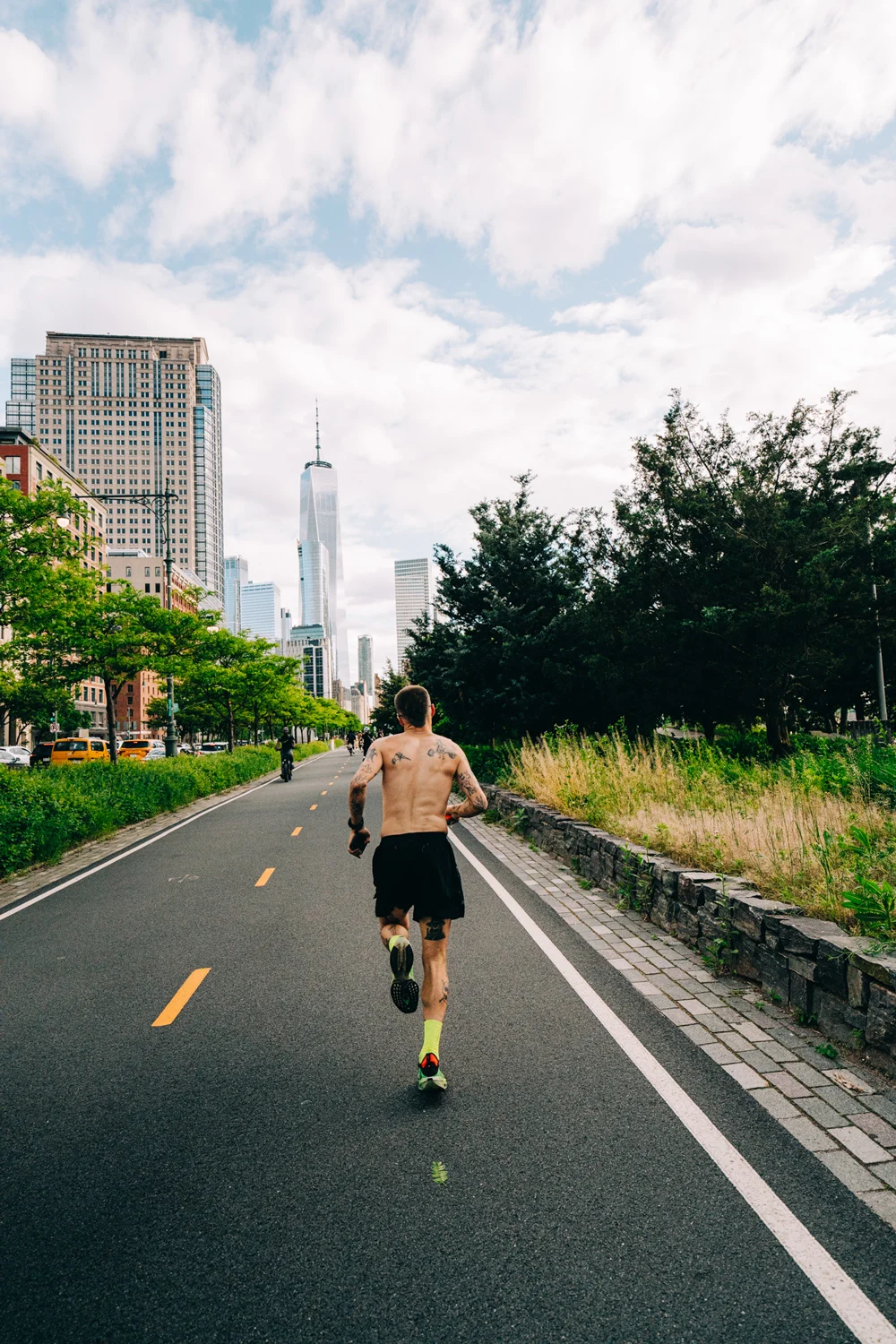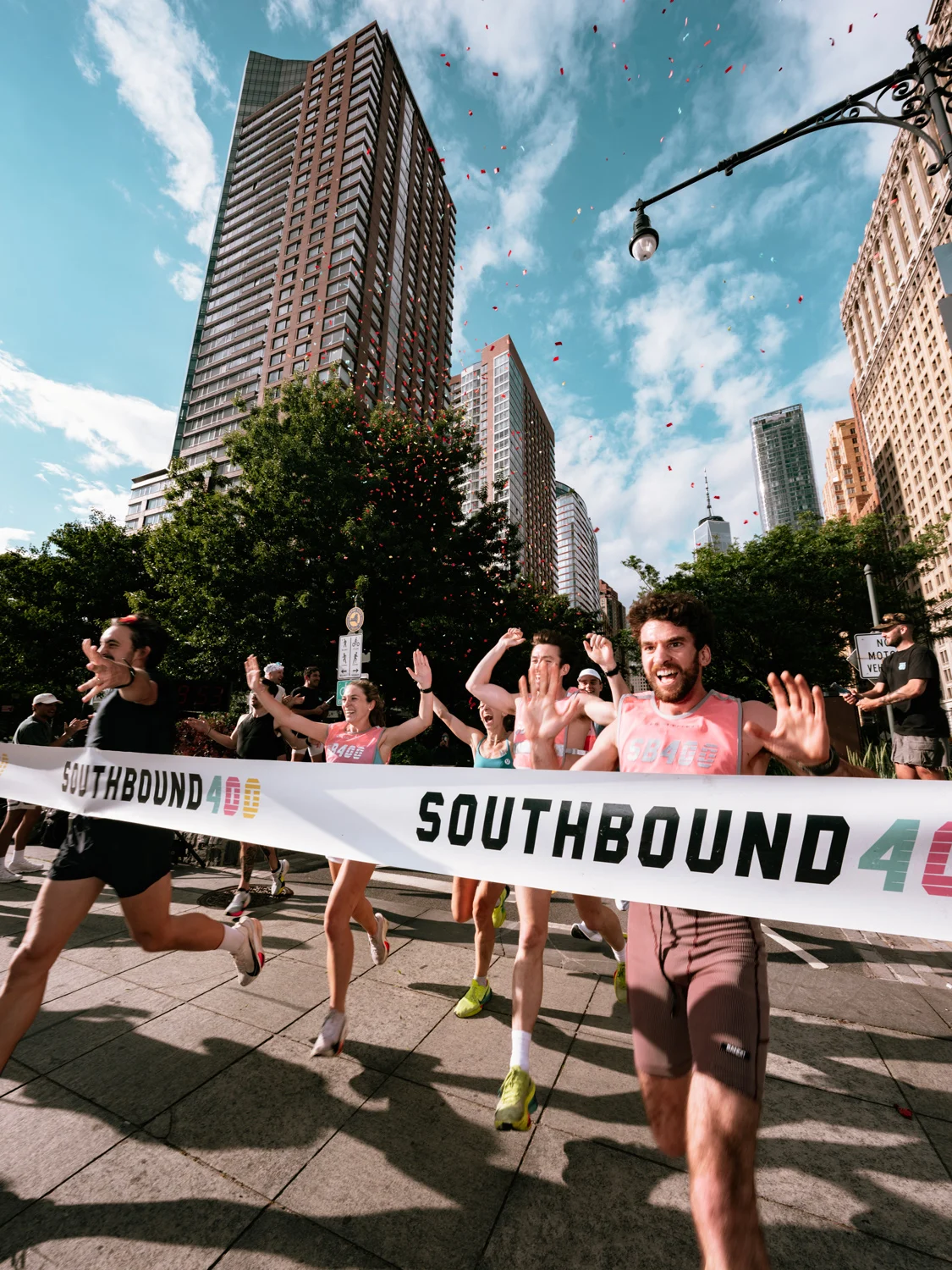In total, Honest Work, the 2025 winner of Southbound 400, completed the race in 37 hours, 38 minutes, and 55 seconds, an average of 5:39 per mile.
Roberts and Southbound's other co-founders see speed like that, and the effort required to plan and prepare to run a race like this that fast, as an honor—and as proof that their idea was a good one. It's only three years old, but Southbound 400 has grown from five teams to 10, and 12 will be welcomed at the start in 2026. Teams have come from Washington DC and Mexico, and runners from Berlin and London. Pou's team, Border to Borough, was the first all-female team to finish.
With the post-pandemic running boom continuing to expand and traditional rites of running passage like the World Marathon Majors becoming harder to get into, the appeal of an alternative event like Southbound seems fair and reasonable, even if sprinting for 400 miles down the entire state of New York doesn't.

Photo by Miya Hirabayashi
Tips for Running Southbound 400, From its Founder & Competitors
Spots are limited — "We want people that are experienced in ultra running who are going to be able to finish the race," said Roberts. "That doesn't mean that you have to be running an eight-minute mile or a nine-minute mile or a 10-minute mile the whole time, but we do have a cutoff time each night at 1 AM."
The fastest team isn't necessarily the best team — Roberts said, "Don't choose the fastest people, choose the people you like the most." People get tired and moody during three-day endurance benders. When you have good relationships with the other runners, you can lean on each other when you're feeling low.
Reserve your vans in advance — With space for the full team and room to rest and recover, vans are the right tool for the job that is SB400. "There's only a limited number of 10 to 12-person vans in New York City to rent for that long of a weekend," said Laraia.
Optimize for fun over speed — "Go into it with the mindset of having the most fun and enjoying this because it's not an experience where you want to be upset with your team," said Laraia. "An argument on day one could ruin the entire weekend."
Make a plan, then scrap it — "Have an A and a B and probably a C plan," said Villarreal. "I think that if you go into the race thinking you have, like, a good structure for the race, you definitely don't."
Fuel with food you're used to — "Stick with foods and fuels that you know work best for your body," said Pou. "I can't digest gels, so I leaned on whole foods and my go-to snacks like onigiris and misubis all day, and made sure to take in plenty of electrolytes to stay hydrated."
Let the trail change you — "The course pushes your body to new limits and the shared experience will be transformative and unforgettable. It will reshape how you view your capacity physically, mentally, and emotionally," said Pou.

Photo by Dave Hashim



















